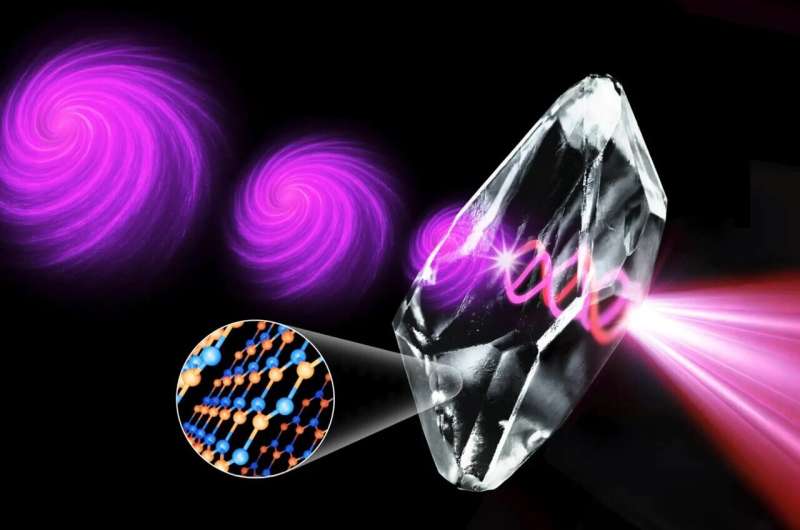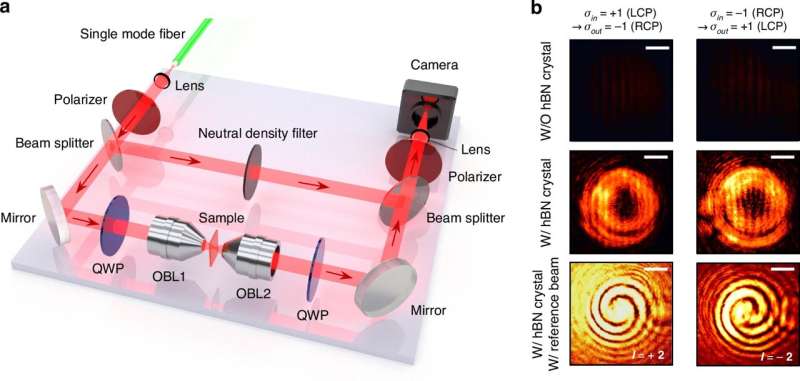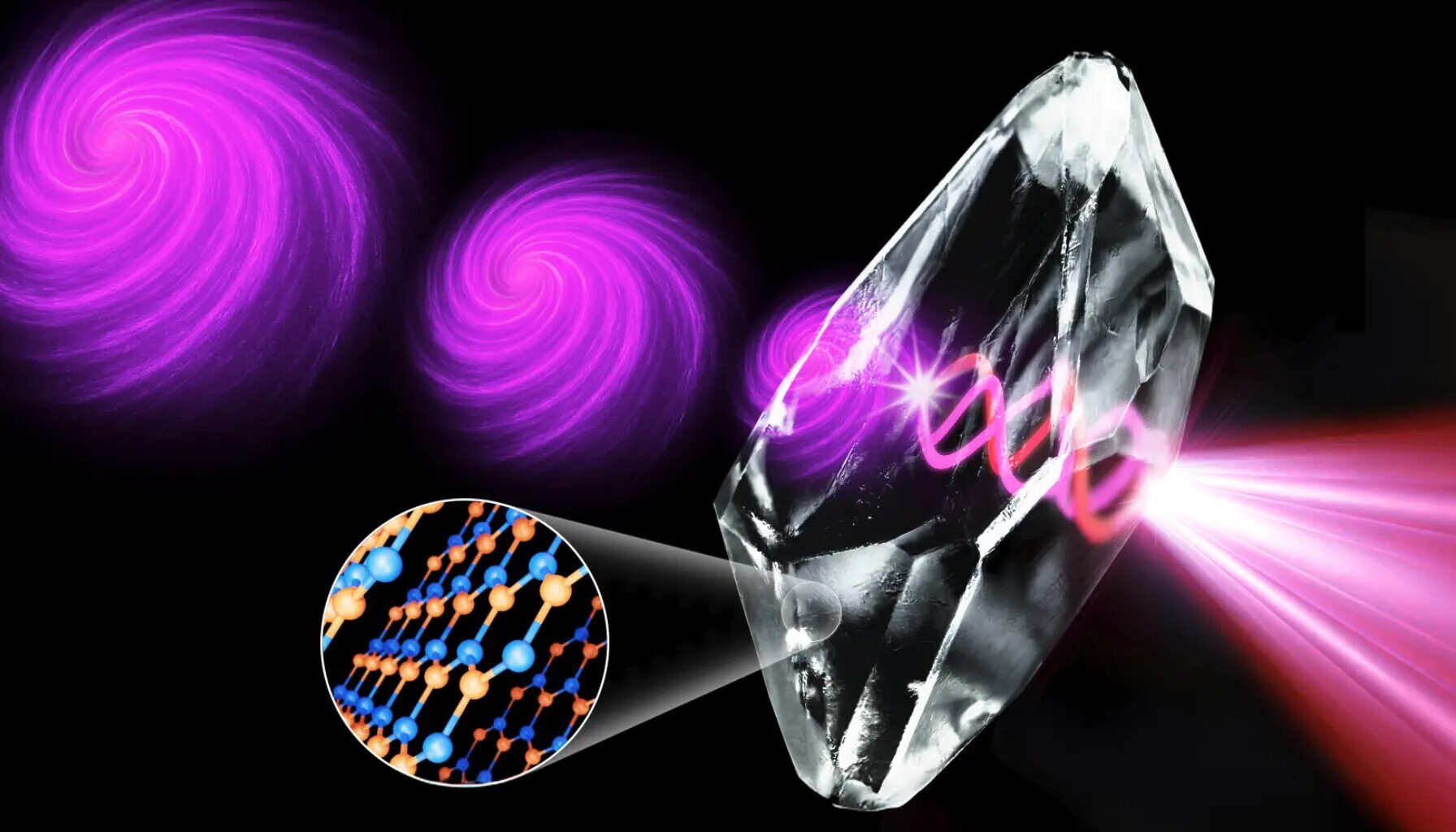
Passing circularly-polarized light through certain van der Waals materials causing the beam to spiral. Credit: Jaegang Jo et al
Imagine a whirlpool spinning in a river, or a tornado swirling through the sky. They don’t just spin on the spot: they travel forward while maintaining that spiraling motion inside them. These twisting motions, called vortices, are powerful and organized spirals. Now, imagine light that behaves the same way: a beam of light that spins as it moves forward. This “twisted” light, known as an optical vortex, can carry more information than normal light, opening the door to faster internet and ultra-secure communications.
Optical vortices can be created by passing a beam of light through a special material that forces the beam to start twisting.
Current optical vortex generators rely on expensive and complex manufacturing techniques or bulky crystals. But our team has found a new, simple way to generate this twisted light using cheap, ultra-thin materials.
Called van der Waals (vdW) materials, they are composed of layers that stick to each other through what’s known as van der Waals force—the intermolecular force that allows spiders to walk on a ceiling without falling. It’s strong enough to hold the layers together, but weak enough that they can easily be pulled apart and reconfigured.
Our method, published in Light: Science & Applications, works without the need for nanofabrication. Instead, we use the natural optical properties of these vdW materials to change the shape of the light as it passes through. It works at scales thinner than a human hair.
We found that when circularly-polarized light, a type of light where all the photons spin in the same direction, enters these thin vdW crystals, the direction of its spin flips, and it gains a spiral twist, turning it into an optical vortex.
This twisting happens because the vdW materials slow the light down in different ways, depending on how it enters, a property known as birefringence.
You can think of it like light entering a funhouse mirror: parts of the beam bend or stretch differently, and the result is a twisted, doughnut-shaped light beam.
We demonstrated this using two common vdW materials: hexagonal boron nitride (hBN) and molybdenum disulfide (MoS₂).
We shined laser beams through the materials of each and measured how well the light twisted. Even with samples just 8 micrometers (for hBN) or 320 nanometers (for MoS₂) thick, we were able to generate well-defined optical vortex beams.
That matters because it shows this method works at extremely small scales. It also works efficiently, converting almost half of the incoming light into twisted beams. We’ve also run computer simulations that suggest we could push the efficiency even higher by changing the shape of the light beam before it enters the material.

Demonstration of the optical vortex generation using the hBN crystal. Credit: Light: Science & Applications (2025). DOI: 10.1038/s41377-025-01926-7
So why does this matter outside the lab?
This twisted beam could be the future of high-speed communications.
Because of their spiral structure, optical vortices offer an additional dimension for encoding information. Think of them as the construction of extra lanes on a data highway so more information can travel at once.
Our method opens the door to smaller, cheaper and more scalable optical devices that could be integrated into future communication systems, including satellites.
To get this technology into the real world, we are working to improve the conversion efficiency, make the system compatible with existing communication technologies and exploring how to integrate it into larger optical systems.
More information:
Jaegang Jo et al, Spin-orbit coupling in van der Waals materials for optical vortex generation, Light: Science & Applications (2025). DOI: 10.1038/s41377-025-01926-7
Provided by
University of Melbourne
Citation:
Ultra-thin materials twist light into optical vortices for faster data transmission (2025, August 19)
retrieved 19 August 2025
from https://phys.org/news/2025-08-ultra-thin-materials-optical-vortices.html
This document is subject to copyright. Apart from any fair dealing for the purpose of private study or research, no
part may be reproduced without the written permission. The content is provided for information purposes only.
